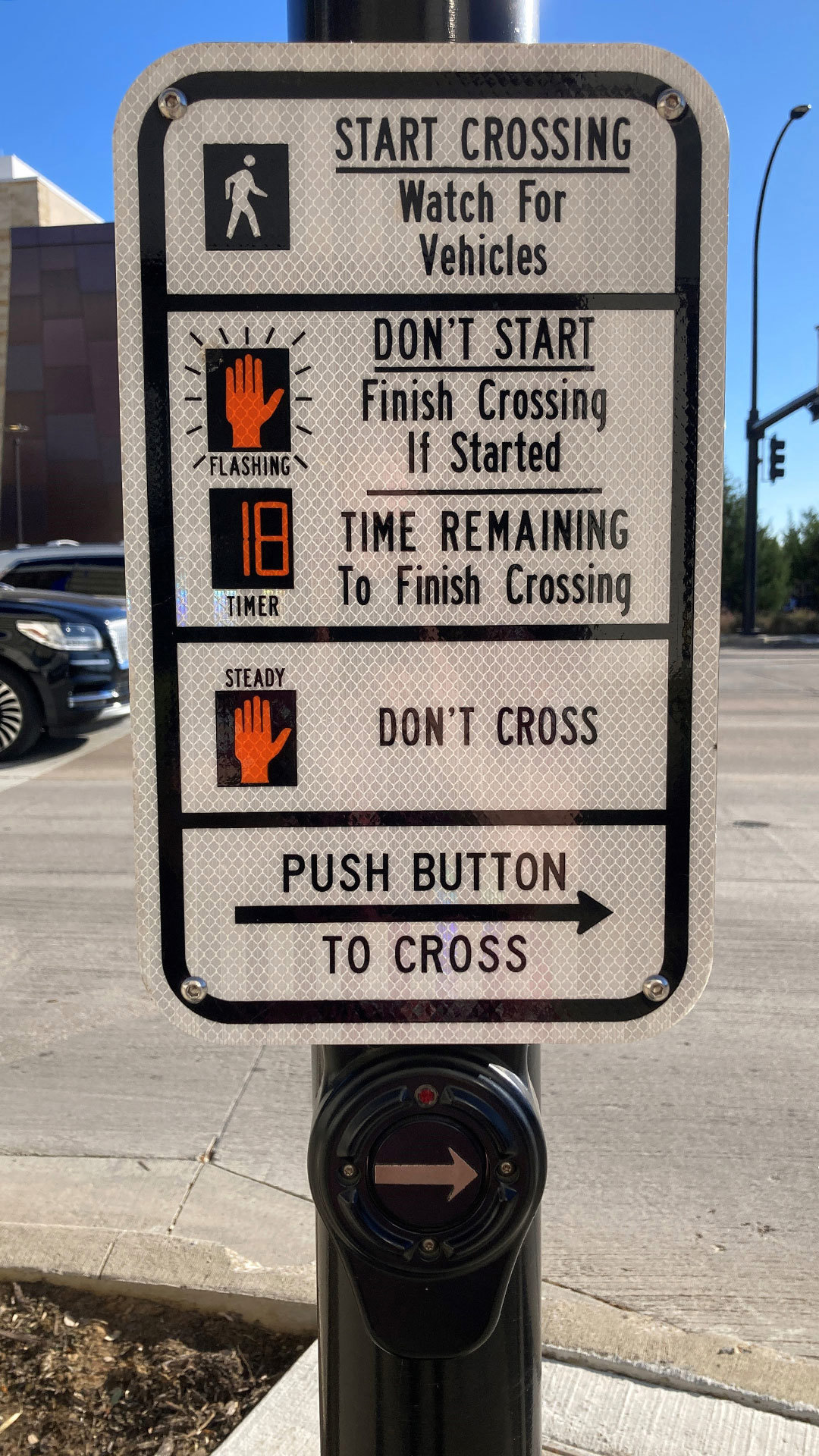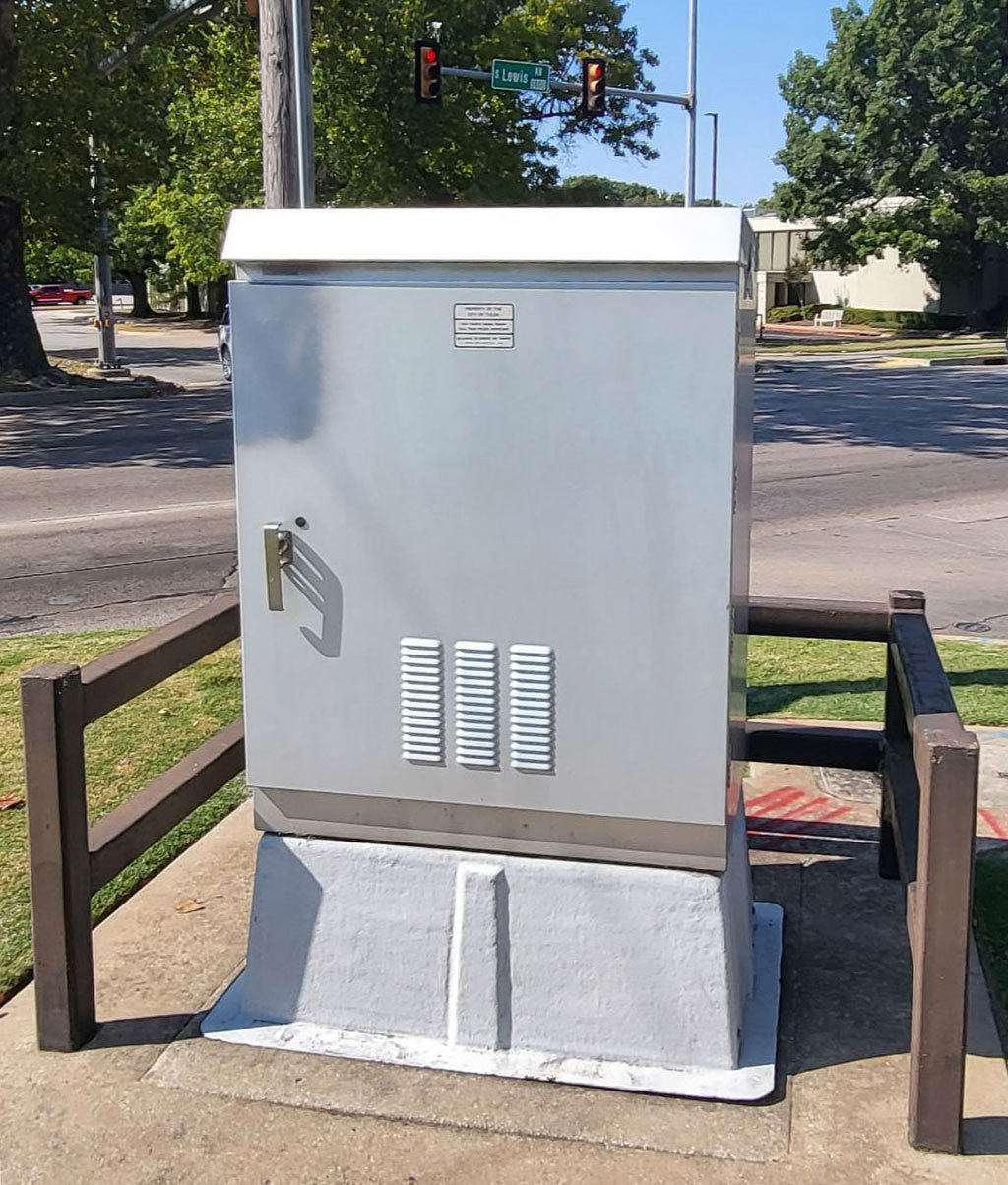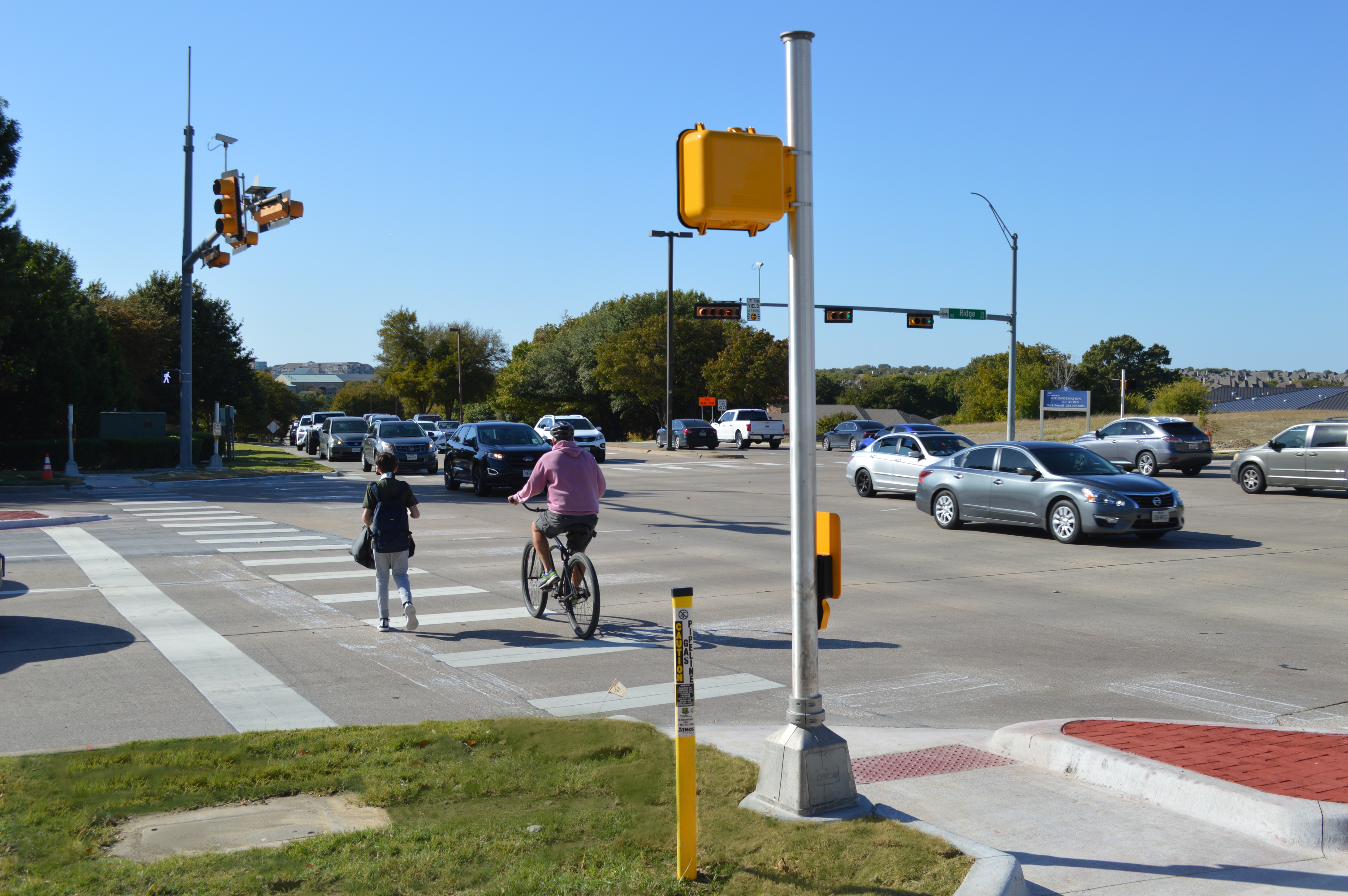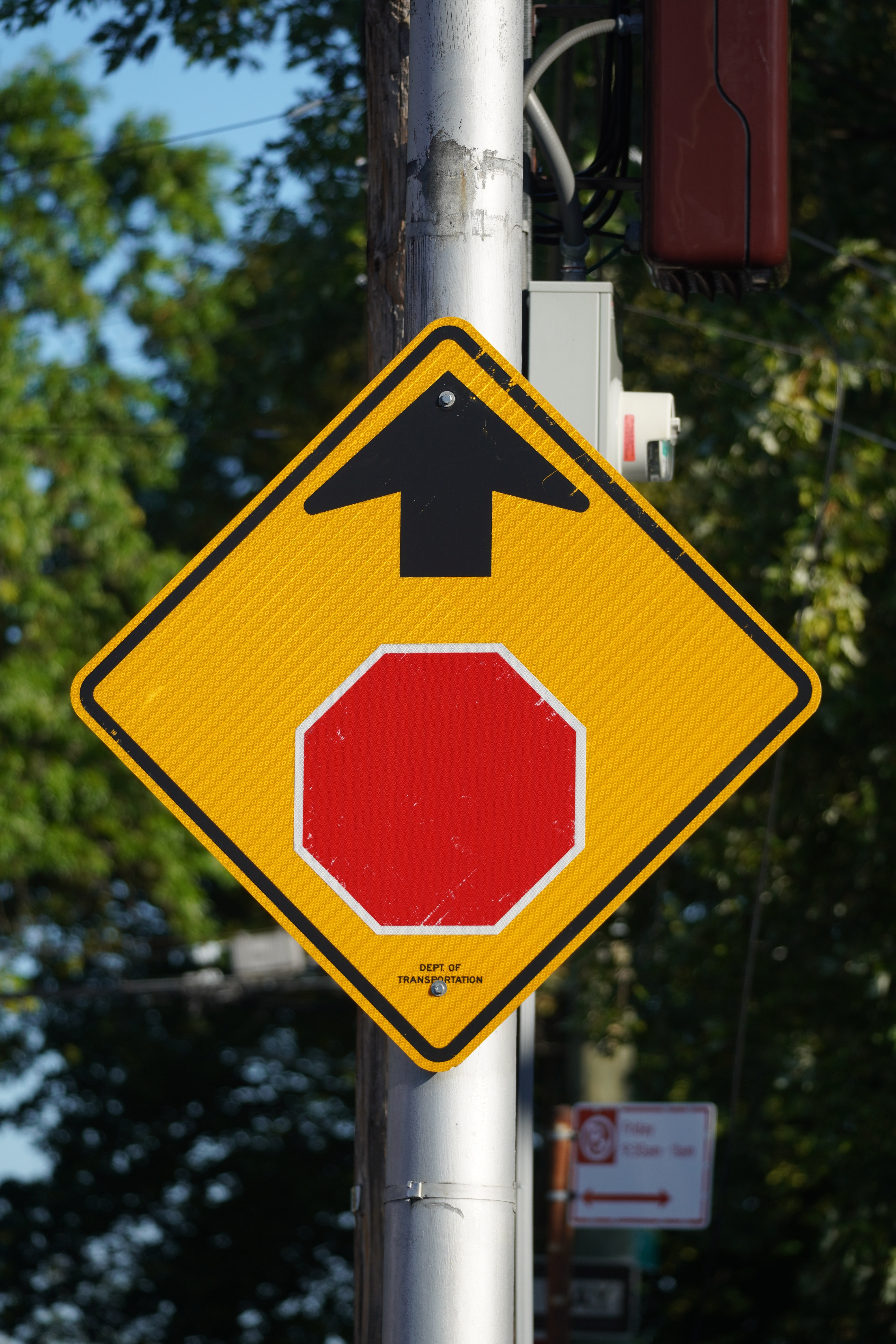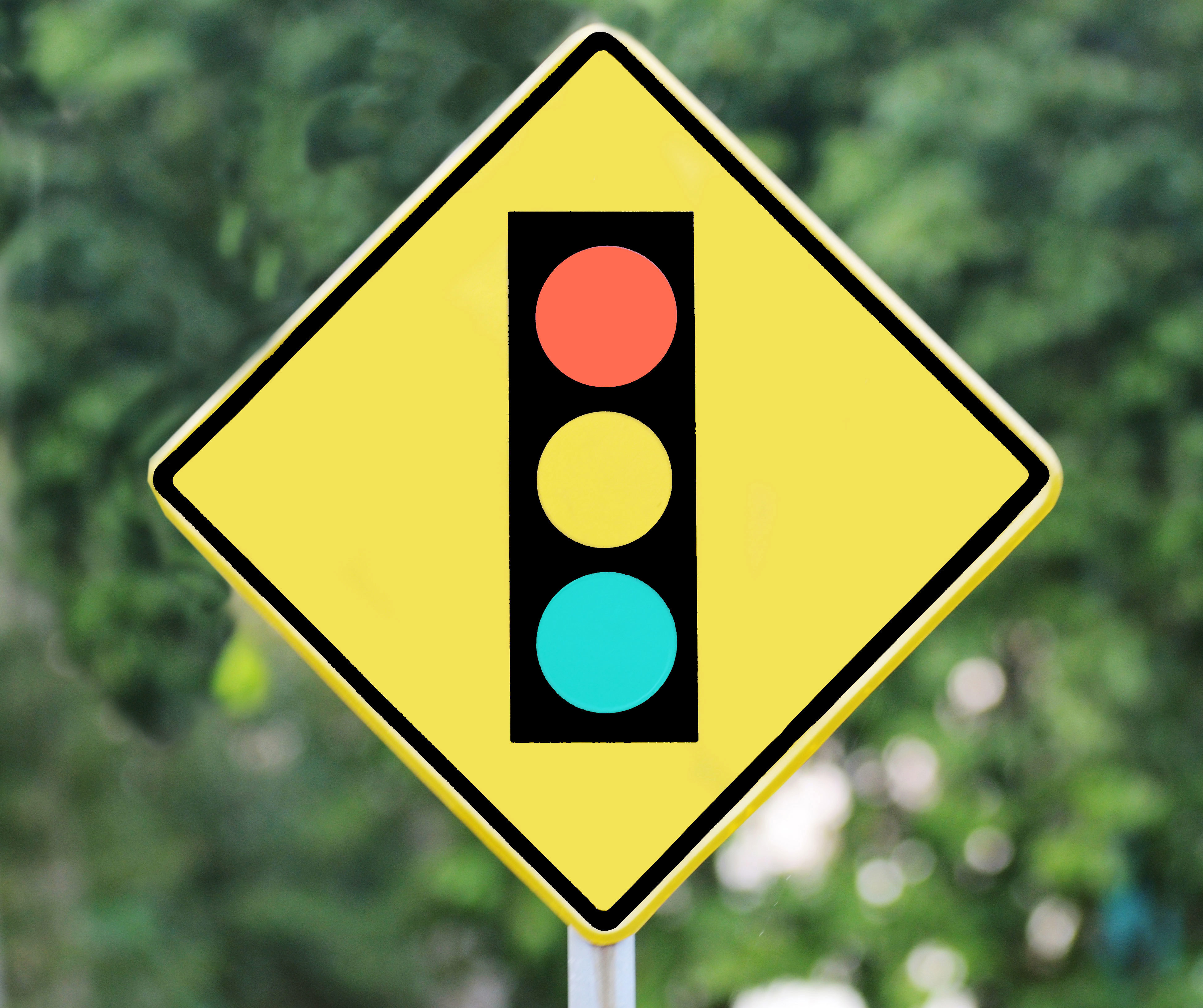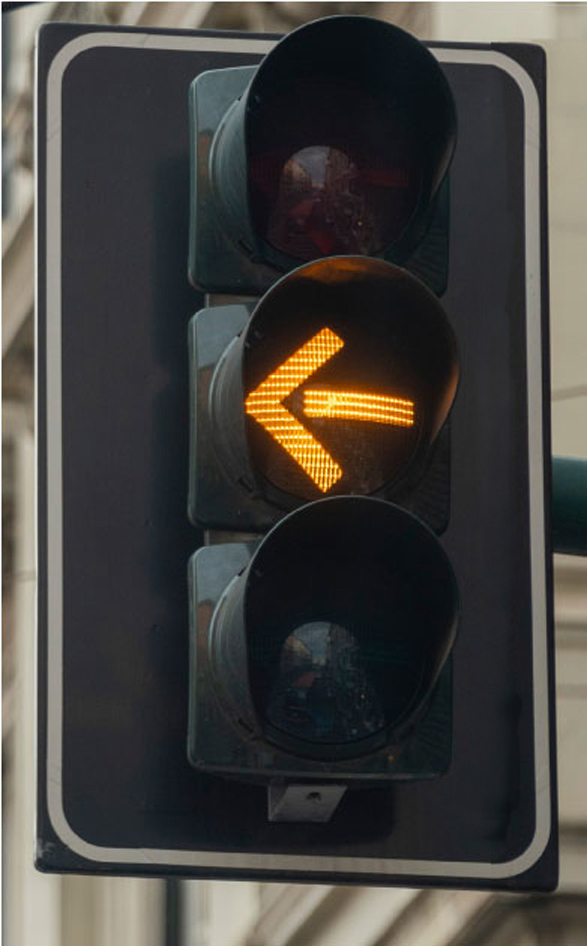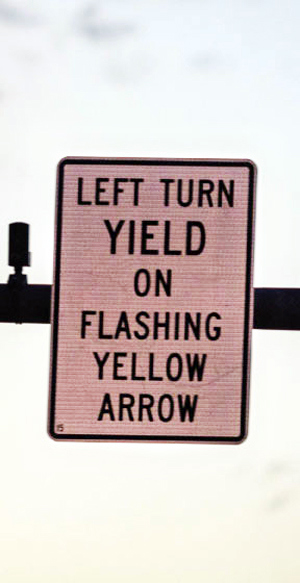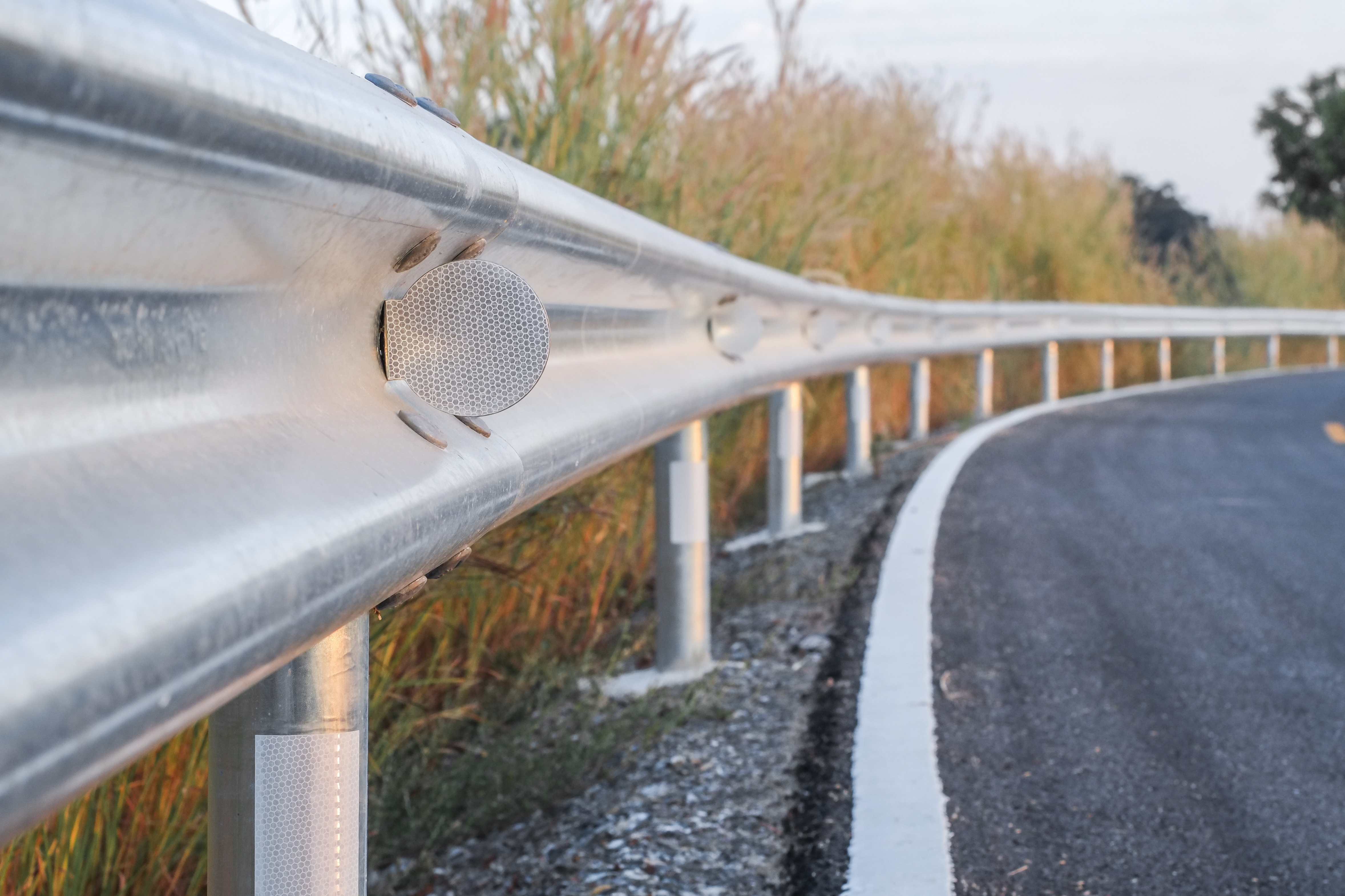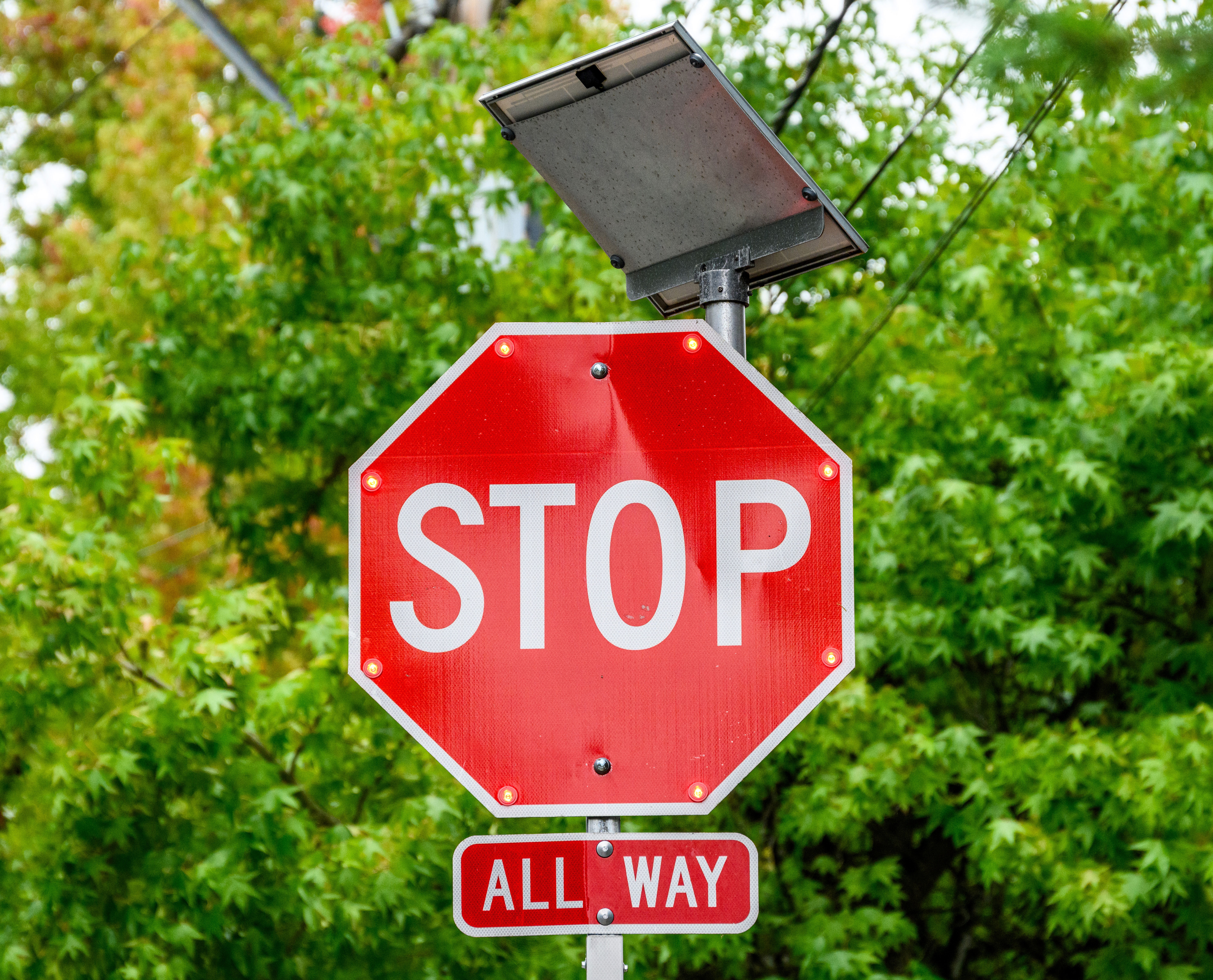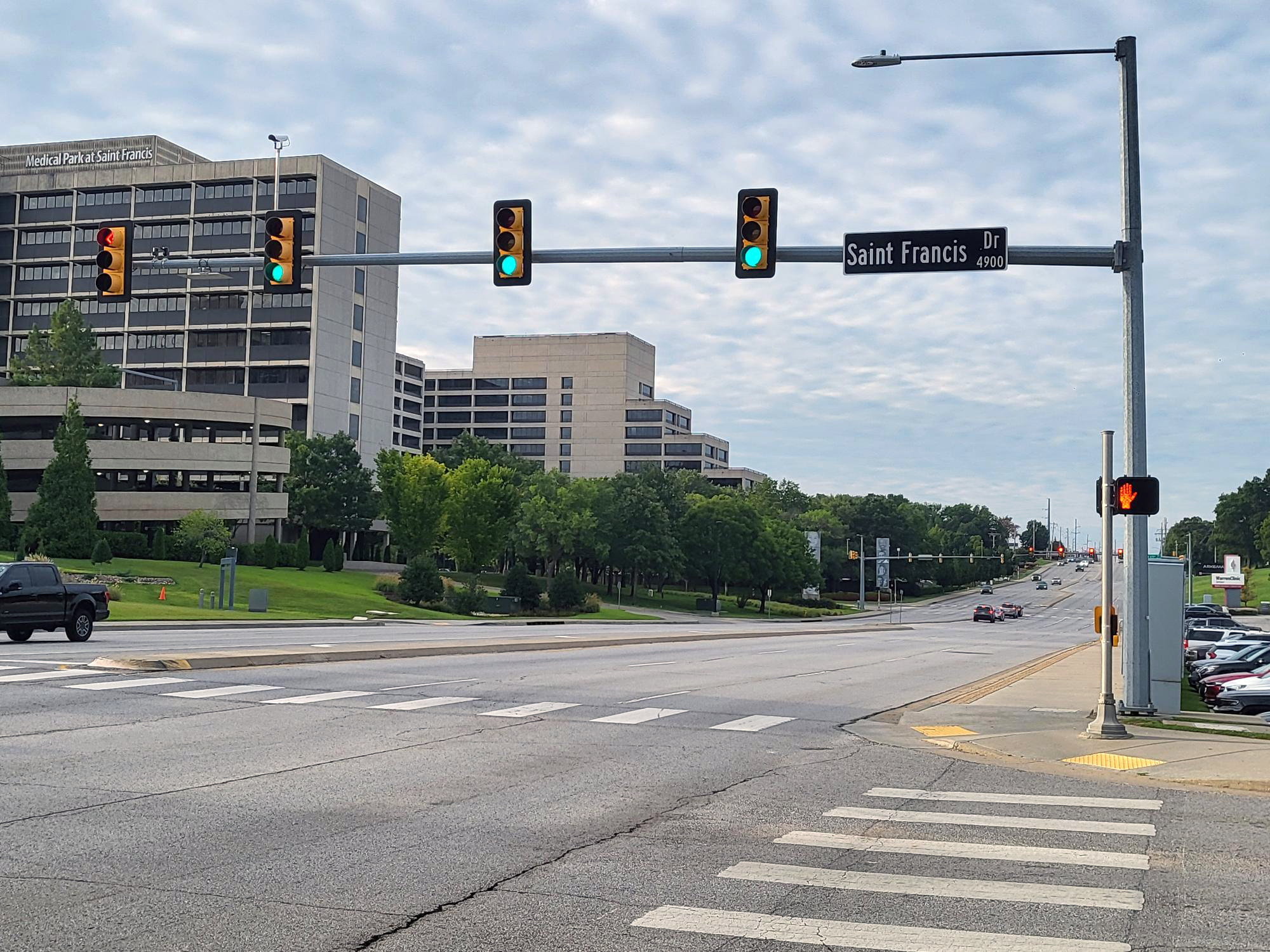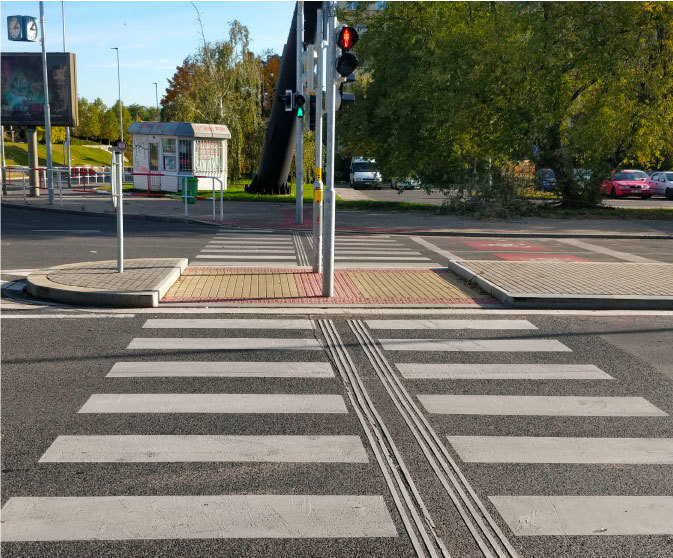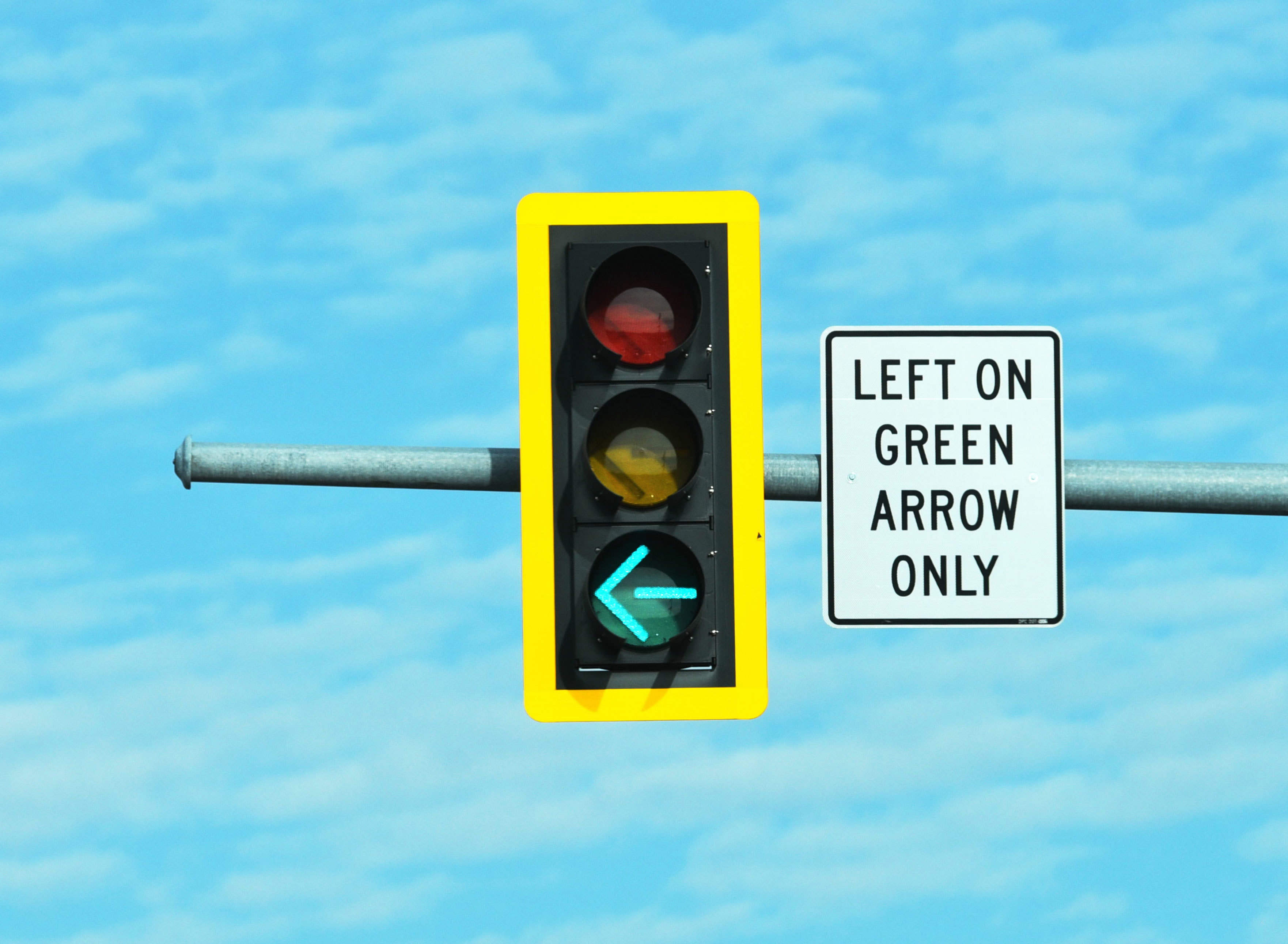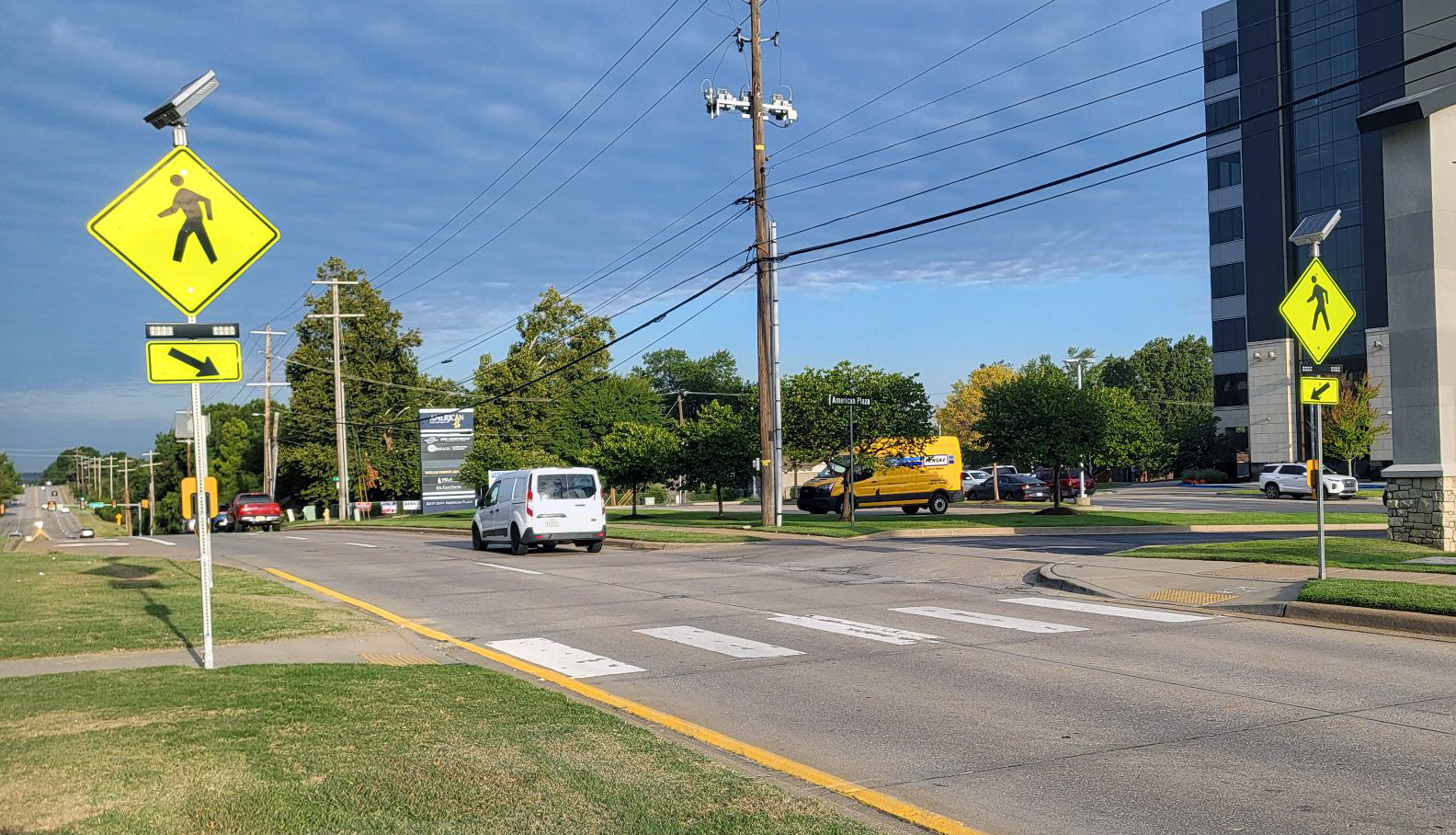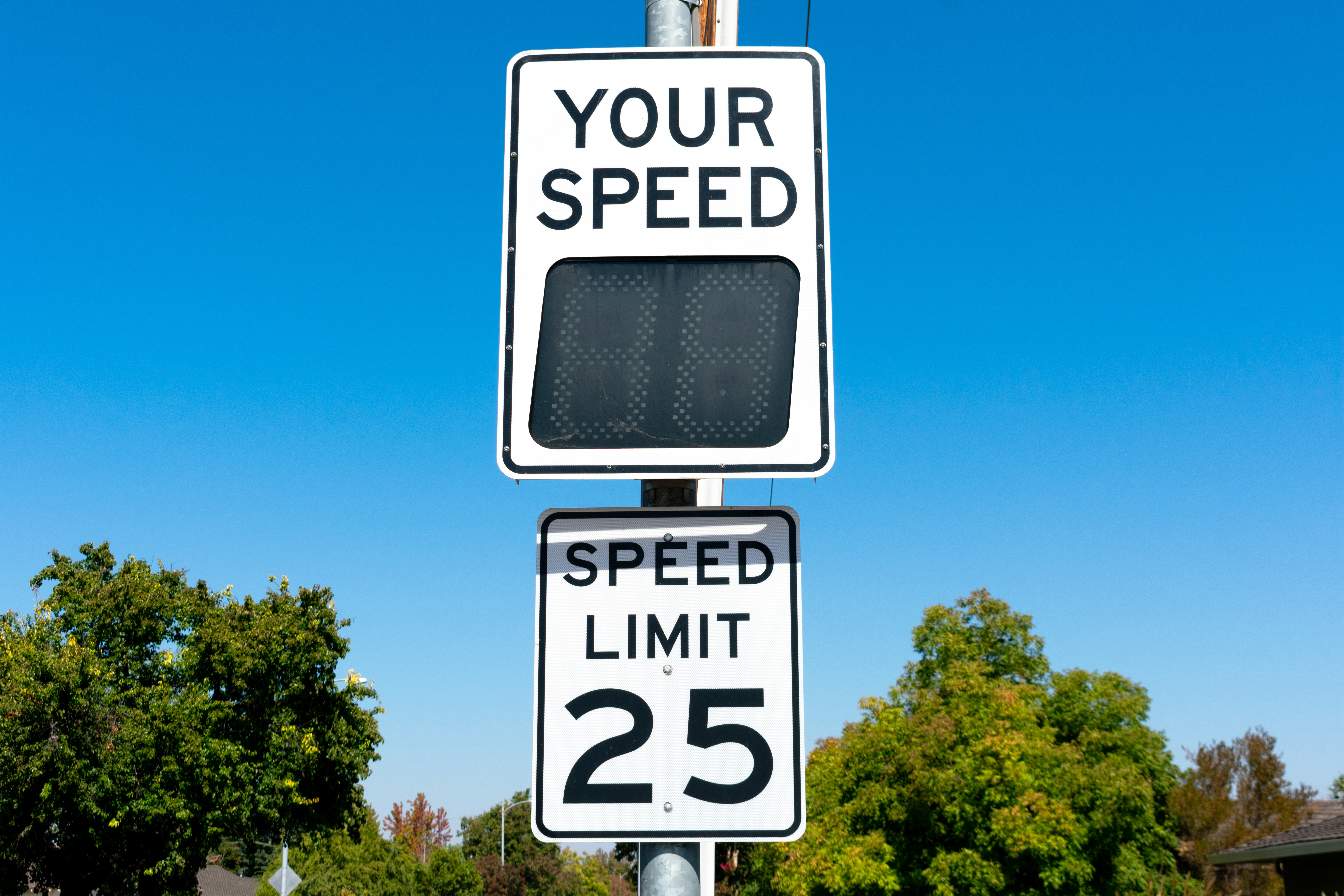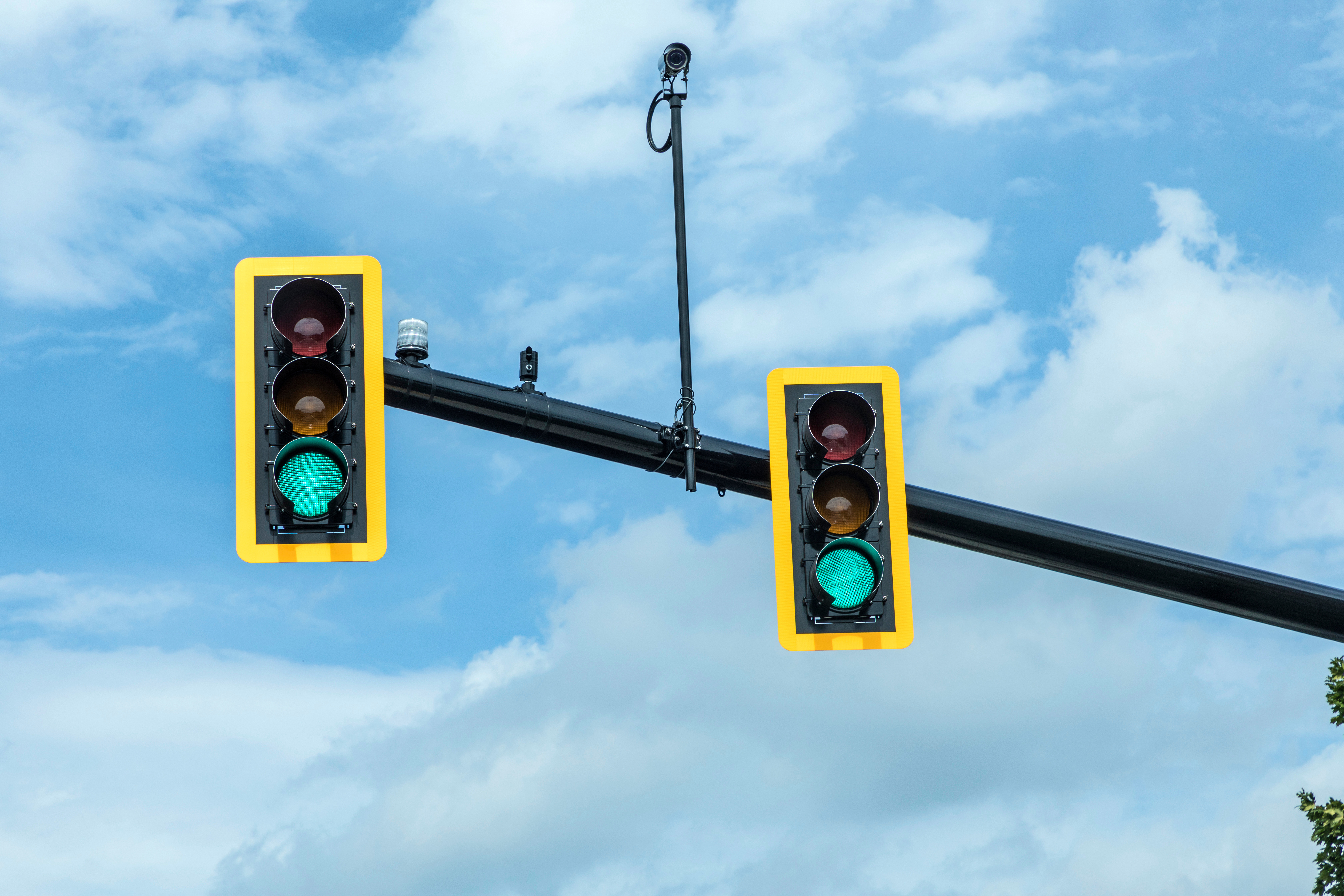Roadway Safety Countermeasures
The purpose of the Safe Streets and Roads for All program is to, “provide grants to local, regional, and Tribal communities for implementation, planning, and demonstration activities as part of a systematic approach to prevent deaths and serious injuries on the nation’s roadways.”
Use the quick links below to review the potential roadway safety countermeasures that may be implemented as part of the INCOG grant.
Quick Links
Accessible Pedestrian Signals (APS)
Summary: APS is a type of pedestrian signal that communicates information about when to walk and not walk at pedestrian crossings through audible signals. They provide enhanced information to pedestrians who are blind or have low vision. Examples include stating the direction of the crosswalk and the street name. APSs also have street names in Braille or raised print installed in them.
Safety Benefits: APS have found to improve the crossing of intersections by blind people due to a more accurate judgement of the WALK interval, reduced pedestrian delay, and more crossings completed before the signal change.[1]
[1] Accessible Pedestrian Signals: Appendix C: Research on APS (apsguide.org)
Battery Backup Retrofits
Summary: Installing battery backup systems allows traffic signals to be fully operational when power failures occur. If a storm causes power lines to go down, the battery backup will keep the signal operational.
Safety Benefits: Maintaining the traffic signal operation when a power outage occurs is beneficial in reducing problems with congestion, delays, and crashes.
Continental Crosswalk
Summary: Continental Crosswalks are considered high visibility crosswalks. A standard crosswalk consists of two parallel white lines. The two white lines mark the crosswalk. Compared to a standard crosswalk, a continental crosswalk consists of multiple stripes, likened to piano keys, that are painted along the path of the crosswalk. This makes the crosswalk more visible compared to the standard parallel lines. This helps drivers see that people might be crossing along the path, and it gives pedestrians a clearer understanding of the path of the crosswalk. Continental crosswalks can be used at intersections with traffic lights, intersections without traffic lights, or at midblock locations.
Safety Benefits: The striping pattern of the continental crosswalk is more visible to drivers thus increasing drivers' awareness to people in the crosswalk. This increases safety for people in the crosswalk. When continental crosswalks are paired with other enhancements, crashes can be reduced by 23-48%[1] (Examples of other enhancements include Rectangular Rapid Flashing Beacon (RRFB), refuge islands, in-street yield signs, and curb extensions.)
[1] Crosswalk Visibility Enhancements Safe Transportation for Every Pedestrian Countermeasure Tech Sheet (dot.gov)
Enhanced Stop-Controlled Intersections
Summary: Multiple low-cost measures can be implemented, that when put together, increase driver awareness that they are approaching an intersection and to take proper precautions. Often enhanced stop-controlled signs are used at intersections that have a history of crashes, on roads that have curves, or on rural roads that may have higher posted speed limits to give drivers warning there is a stop ahead. Examples of enhanced measures include reflective sheeting on signposts, oversized advance intersection warning signs, enhanced pavement markings, and double-arrow warning signs.
Safety Benefits: With the advanced warning of a stop sign, the driver has more time to slow down and ultimately stop at the intersection. Safety enhancements at stop-controlled intersections have been shown to reduce crashes, especially in rural areas.[1]
[1] Systemic Application of Multiple Low-Cost Countermeasures at Stop-Controlled Intersections - Safety | Federal Highway Administration (dot.gov)
Flashing Advanced Warning Beacons and Static Advanced Warning Signs for Signalized Intersections
Summary: Flashing Advanced Warning Beacons and Static Advanced Warning Signs are appropriate for rural, isolated intersections or any location where there may be sight distance issues for drivers to see the intersection ahead. This could be because the road is narrow, curved, or vegetation such as large trees may be growing close to the side of the road. The Flashing Advanced Warning Beacon usually flashes continuously, regardless of what is occurring at the signal. SIGNAL AHEAD or PREPARE TO STOP signs are considered static when they are implemented by themselves and not with a flashing beacon. Drivers should anticipate either slowing down or coming to a complete stop when they see either a Flashing Advanced Warning Beacon or a Static Advanced Warning Sign.
Safety Benefits: Advanced warnings alert drivers to a potential stop ahead which may be otherwise difficult to see. Advanced warning beacons at signals have been shown to reduce fatal and injury crashes by 44%.[1] In urban settings, the static sign SIGNAL AHEAD decreases all collisions by 16% – 35% and in rural settings 16% - 40%.[2]
[1] Chapter 11 - Signalized Intersections: Informational Guide, August 2004 - FHWA-HRT-04-091 (dot.gov)
Flashing Yellow Arrow
Summary: A Flashing Yellow Arrow (FYA) signal indicates a permissive signal phase where left turners may make their left turn if there are no opposing vehicles. FYAs improve intersection safety by providing clearer instructions to left-hand turning drivers. When drivers see flashing traffic signal lights, they intuitively know to take extra precautions.
Safety Benefits: Flashing yellow arrows remind left turning traffic that they must yield to through traffic, and only turn when it is safe to do so. Flashing Yellow Arrows have been shown to decrease left turn crashes by 20%.[1]
[1]https://www.vdot.virginia.gov/media/vdotvirginiagov/doing-business/technical-guidance-and-support/traffic-operations/vhsip/FYA-Local-Agency-One-Pager_acc050222.pdf
Guardrails
Summary: A guardrail acts as a safety barrier intended to prevent a vehicle from either leaving the roadway if there is a steep embankment or slope, or from hitting large objects such as bridge piers, utility poles, or trees. Guardrails are also sometimes used when there are sharp curves in the road. They can deflect a vehicle back to the roadway, slow it down, or make it come to a complete stop.
Safety Benefits: Guardrails can deflect a vehicle back to the roadway, slow it down, or make it come to a complete stop. Guardrails can reduce the severity of a collision by preventing vehicles from leaving the roadway or hitting a fixed object. There are many different factors such as the speed of the vehicle that determines the safety benefits of guardrails.[1]
LED Stop Signs
Summary: A STOP sign is enhanced with red LED lights on the outer edge of the sign that flash continually. This captures the driver’s attention and is intended to increase stopping compliance and prevent running the STOP sign.
Safety Benefits: Alerting drivers to the presence of the STOP sign can prevent collisions at intersections where signs may be hard to see. The estimated crash reduction is approximately 42%[1]
New Traffic Signals
Summary: Traffic signals are used at intersections to regulate the safe flow of traffic, allow pedestrians and vehicles to cross intersections, ensure an orderly flow of traffic, and reduce conflicts between vehicles entering intersections from different directions.
Safety Benefits: A traffic signal controls all directions of traffic and indicates when it is safe to proceed through the intersection. When intersections have traffic signals, there is a 19% reduction for all crash types when compared to intersections without traffic signals.[1]
[1] Safety Effectiveness of Adding a Signal Head Per Lane in Wisconsin (itewisconsin.org)
Pedestrian Hybrid Beacon (PHB)
Summary: A traffic control device designed to help pedestrians safely cross higher-speed roadways at midblock crossings and uncontrolled intersections. The beacon head remains dark until a pedestrian activates the beacon, which then initiates a yellow to red lighting sequence for vehicles. Once the beacons are steady red, the pedestrian can safely cross the roadway.
Safety Benefits: PHBs provide a designated light sequence that stops vehicles and allows pedestrians to safely cross at crosswalks. PHBs have found to reduce total pedestrian crashes by 55%, and a reduction in serious pedestrian injury and fatality crashes by 15%.[1]
Pedestrian Refuge Island
Summary: A pedestrian refuge island is a space in the middle of a larger roadway with a refuge area that is intended to help protect pedestrians who are crossing a road. They allow pedestrians to focus on one direction of traffic at a time and allow more opportunities to safely cross.
Safety Benefits: Pedestrian islands give pedestrians a safe place to wait between the two directions of traffic until it is safe to cross. Pedestrian Refuge Islands have shown to reduce pedestrian crashes by 56%.[1]
[1] Medians and Pedestrian Refuge Islands in Urban and Suburban Areas | FHWA (dot.gov)
Protected Left-Turn Movement
Summary: Protected Left-Turn Movement is when a green arrow for left-turning vehicles allows drivers to complete the turn without conflicting with oncoming traffic or pedestrians. During this phase, oncoming traffic is stopped with a red light.
Safety Benefits: Studies reveal that protected-only left-turn signals (a solid green left arrow) reduces injury crashes and fatalities when compared to a protected/permitted left-turn signal. The green arrow alerts the left-turning traffic that is safe to turn, and oncoming traffic is stopped. [1]
Asaduzzaman, M., Thapa, R., & Codjoe, J. A. (2022). Safety and Operational Effectiveness of Protected Only Versus Protected/Permitted Left-Turn Signal Phase. Transportation Research Record, 2676(9), 347-356. https://doi.org/10.1177/03611981221086631
Rectangular Rapid Flashing Beacons (RRFB)
Summary: RRFBs are used to enhance driver awareness of pedestrians at marked crosswalks that do not have a traffic signal or a Pedestrian Hybrid Beacon (PHB) that would cause a vehicle to come to a complete stop. The yellow flashing pattern of the sign can be activated with either a pushbutton or automatic detection of pedestrians at the signs.
Safety Benefits: RRFBs provide warning to vehicles that pedestrians may be in the crosswalk. They can increase motorist yielding rates up to 98% (This can vary depending on speed limit, number of lanes, crossing distance, and time of day.) RRFBs can also reduce crashes up to 47%.[1]
[1] Rectangular Rapid Flashing Beacons (RRFB) | FHWA (dot.gov)
Speed Feedback Signs
Summary: A sign that activates and shows a driver’s speed when they exceed the posted speed limit. When drivers are exceeding the speed limit, messages such as “Your Speed XX” or “Slow Down” are displayed. The purpose of the feedback sign is to slow traffic down, and as a result, decrease crashes.
Safety Benefits: If a driver is operating a vehicle over the posted speed limit, the Speed Feedback Sign will flash a message and alert the driver they are over the speed limit. Speed Feedback Signs can decrease the average speed of vehicles and reduce crashes. [1]
Striping
Summary: Pavement markings on the roadway communicate to roadway users the intended travel path. Different striping patterns and colors give drivers clues as to the direction of traffic (i.e. arrows), and allowable movements such as passing.
Safety Benefits: Striping guides vehicles and pedestrians in appropriate use of roadway. Ensuring that striping is visible, especially at night or in wet weather, can reduce collisions.[1]
[1] The Benefits of Pavement Markings - Safety | Federal Highway Administration (dot.gov)
Upgrade Traffic Signal Backplates (Reflective Yellow)
Summary: Reflective yellow backplates are added to the back of a traffic signal head. The yellow contrasts with the signal head, improving the overall visibility of the signal in both daytime and nighttime. In addition, when there are power outages, the retroreflective backplate is still visible, signaling to drivers they are coming upon an intersection and to stop.
Safety Benefits: Reflective yellow backplates provide additional visibility for traffic signals. When reflective backplates are put on the back of signal heads, there is a 15% reduction in total crashes[1]
